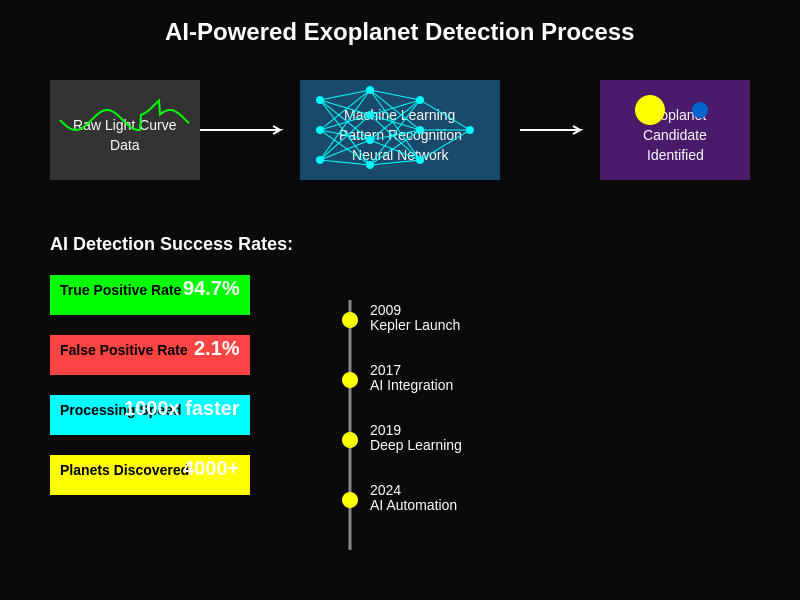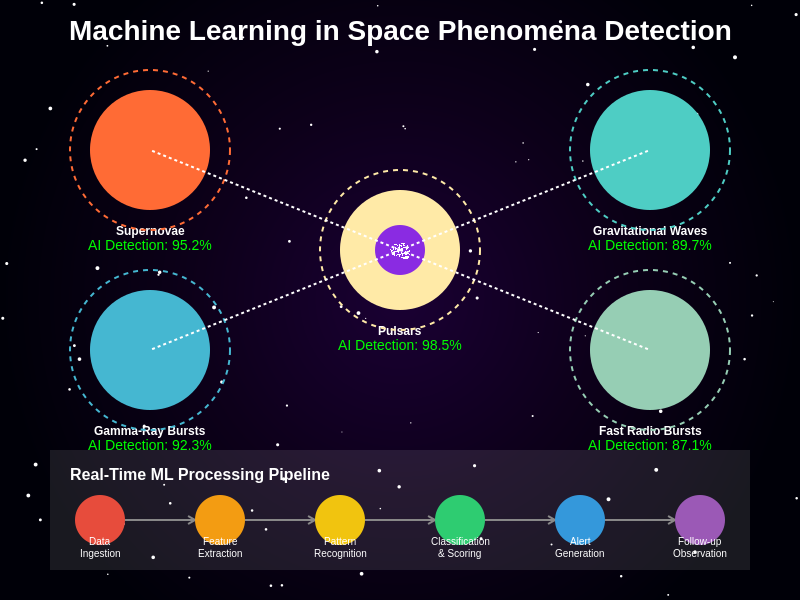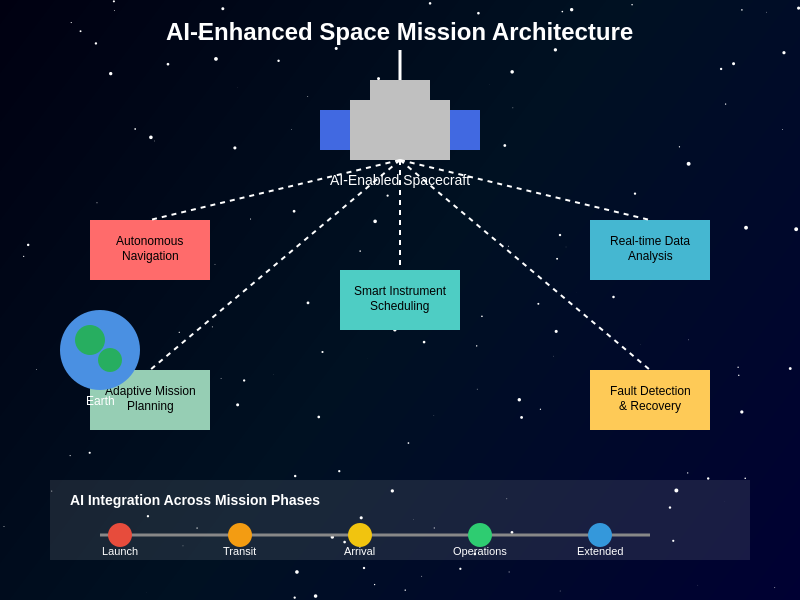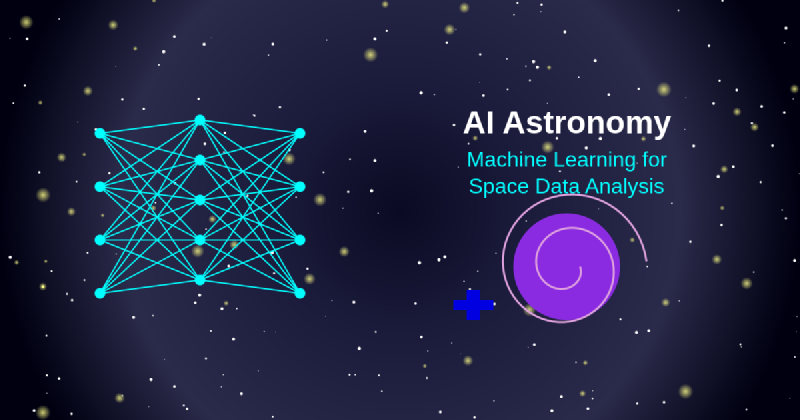The cosmos has always captivated humanity with its infinite mysteries and boundless expanse, but never before have we possessed such powerful tools to unlock its secrets as we do today through artificial intelligence and machine learning. The intersection of computational intelligence and astronomical research has created unprecedented opportunities for discovery, enabling scientists to process vast quantities of space data with remarkable precision and uncover cosmic phenomena that would have remained hidden using traditional analytical methods. This revolutionary approach to space exploration represents a fundamental shift in how we understand and interact with the universe around us.
Explore the latest AI developments in scientific research to stay informed about cutting-edge technologies that are transforming multiple scientific disciplines including astronomy and space exploration. The application of machine learning algorithms to astronomical data has opened new frontiers in our quest to understand everything from the formation of galaxies to the detection of potentially habitable exoplanets, marking a new era of discovery that combines human curiosity with artificial intelligence capabilities.
The Revolution in Space Data Processing
Modern astronomical observations generate data at an unprecedented scale, with space telescopes and ground-based observatories collecting terabytes of information every single day. The Hubble Space Telescope alone has captured over 1.5 million observations throughout its operational lifetime, while newer instruments like the James Webb Space Telescope produce even more detailed and voluminous datasets. Traditional methods of analyzing this information have proven inadequate for handling such massive scales, creating a critical need for automated systems capable of processing and interpreting cosmic data with both speed and accuracy.
Machine learning algorithms have emerged as the ideal solution for this challenge, offering sophisticated pattern recognition capabilities that can identify subtle signals and anomalies within complex astronomical datasets. These artificial intelligence systems can analyze spectroscopic data, identify stellar classifications, detect gravitational wave signatures, and recognize patterns in cosmic microwave background radiation with levels of precision and consistency that surpass human analytical capabilities. The integration of AI into astronomical research workflows has transformed data analysis from a time-consuming manual process into an efficient, automated system that can process years worth of observations in mere hours.
Exoplanet Discovery Through AI Pattern Recognition
The search for exoplanets represents one of the most exciting applications of artificial intelligence in modern astronomy, with machine learning algorithms playing a crucial role in identifying potentially habitable worlds beyond our solar system. Traditional methods of exoplanet detection relied heavily on manual analysis of light curves and radial velocity measurements, processes that were both time-intensive and prone to human error. AI systems have revolutionized this field by developing sophisticated pattern recognition capabilities that can identify the subtle dimming patterns caused by planetary transits across distant stars.
Enhance your AI research capabilities with Claude for advanced analysis and interpretation of complex scientific datasets across multiple domains including astronomical research. The Kepler Space Telescope mission generated an enormous dataset containing millions of stellar observations, within which thousands of potential exoplanets remained hidden until machine learning algorithms were deployed to systematically analyze the data. These AI systems successfully identified over 4,000 confirmed exoplanets and thousands of additional candidates, demonstrating the extraordinary potential of artificial intelligence for astronomical discovery.
Machine learning models trained on confirmed exoplanet signatures can now distinguish between genuine planetary signals and various forms of instrumental noise or stellar variability with remarkable accuracy. Deep learning networks have been particularly effective at processing light curve data, learning to recognize the characteristic shapes and periodicities associated with different types of planetary systems. These advances have not only accelerated the rate of exoplanet discovery but have also improved the reliability of detections, reducing the number of false positives that previously complicated follow-up observations and confirmation studies.

The sophisticated process of AI-driven exoplanet detection involves multiple stages of data processing and pattern recognition, from initial signal identification through final confirmation and characterization of planetary candidates.
Galactic Structure and Dark Matter Mapping
Understanding the large-scale structure of our galaxy and the distribution of dark matter represents one of the most challenging problems in modern astrophysics, requiring the analysis of enormous datasets containing information about billions of stars and celestial objects. Machine learning algorithms have proven exceptionally capable of processing and interpreting this complex information, enabling astronomers to create detailed three-dimensional maps of galactic structure and identify the gravitational signatures of dark matter throughout the cosmos.
The European Space Agency’s Gaia mission has revolutionized our understanding of the Milky Way by precisely measuring the positions, distances, and motions of over one billion stars. The resulting dataset contains such vast amounts of information that traditional analysis methods would require decades to process completely. AI algorithms have streamlined this analysis by automatically classifying stellar populations, identifying star formation regions, and tracing the spiral structure of our galaxy with unprecedented precision and detail.
Artificial intelligence has also played a crucial role in dark matter research by analyzing gravitational lensing effects and galaxy cluster dynamics. Machine learning models can identify weak lensing signatures that would be virtually impossible to detect through manual analysis, enabling astronomers to map the distribution of dark matter across cosmic scales. These AI systems have revealed complex patterns in dark matter distribution that provide important insights into the fundamental structure and evolution of the universe.
Stellar Classification and Evolutionary Analysis
The classification and analysis of stellar populations represent fundamental aspects of astronomical research that have been dramatically enhanced through machine learning applications. Traditional stellar classification systems relied on manual spectroscopic analysis and photometric measurements, processes that were both labor-intensive and limited by human analytical capabilities. AI algorithms have automated and refined these processes, enabling rapid classification of millions of stars while simultaneously identifying unusual objects that warrant further investigation.
Machine learning models trained on spectroscopic data can automatically determine stellar parameters including temperature, metallicity, surface gravity, and evolutionary status with accuracy levels that match or exceed traditional methods. These systems can process vast stellar surveys and identify rare objects such as white dwarf stars, neutron stars, and stellar remnants that provide crucial insights into stellar evolution and galactic chemical enrichment processes.
Advanced AI systems have also revolutionized the study of variable stars by automatically detecting and classifying different types of stellar variability from long-term photometric monitoring programs. These algorithms can distinguish between various classes of variable stars including pulsating variables, eclipsing binaries, and cataclysmic variables, providing astronomers with comprehensive catalogs of stellar behavior that would be impossible to compile through manual analysis alone.
Cosmic Phenomena Detection and Analysis
The detection and analysis of transient cosmic phenomena represent areas where artificial intelligence has made particularly significant contributions to astronomical research. Events such as supernovae, gamma-ray bursts, gravitational wave sources, and fast radio bursts occur unpredictably and often require immediate follow-up observations to maximize scientific return. Machine learning algorithms have enabled real-time detection and classification of these phenomena, facilitating rapid response observations that capture crucial data during the brief windows when these events are observable.
Utilize advanced AI research tools like Perplexity for comprehensive analysis of scientific literature and real-time information gathering related to astronomical discoveries and space science developments. The Laser Interferometer Gravitational-Wave Observatory (LIGO) exemplifies the successful application of AI to cosmic phenomena detection, with machine learning algorithms playing essential roles in identifying gravitational wave signatures within extremely noisy detector data. These systems can distinguish genuine astrophysical signals from instrumental artifacts and environmental disturbances with remarkable sensitivity and reliability.
Artificial intelligence has also transformed supernova research by enabling automated detection and classification of stellar explosions across vast areas of sky. AI systems can analyze millions of astronomical images, identify new point sources that may represent supernova candidates, and classify these events according to their spectroscopic and photometric properties. This automated approach has dramatically increased the rate of supernova discovery while providing astronomers with comprehensive datasets for studying stellar death and cosmic chemical evolution.

The application of machine learning to cosmic phenomena detection involves sophisticated algorithms that can process multiple data streams simultaneously to identify and characterize transient astronomical events.
Radio Astronomy and SETI Applications
Radio astronomy has experienced a renaissance through the application of artificial intelligence and machine learning technologies, with AI systems proving particularly effective at processing the enormous datasets generated by modern radio telescopes and identifying signals of potential astronomical or technological origin. The search for extraterrestrial intelligence (SETI) represents one of the most intriguing applications of AI in radio astronomy, with machine learning algorithms capable of distinguishing between natural astrophysical signals and potential artificial transmissions from technological civilizations.
The Breakthrough Listen project, one of the most comprehensive SETI initiatives ever undertaken, relies heavily on machine learning algorithms to analyze radio signals from millions of stars and thousands of galaxies. These AI systems can identify narrow-band signals, unusual modulation patterns, and other characteristics that might indicate technological origin while filtering out the vast majority of signals that originate from terrestrial interference or known astrophysical sources.
Radio pulsar research has also benefited enormously from AI applications, with machine learning algorithms enabling the discovery of hundreds of new pulsars through automated analysis of radio survey data. These systems can identify the characteristic pulse patterns of neutron stars even when the signals are weak or partially obscured by interstellar dispersion effects. AI-driven pulsar discovery has provided crucial insights into neutron star physics, stellar evolution, and the structure of our galaxy.
Image Processing and Astronomical Surveys
The processing and analysis of astronomical images represent areas where artificial intelligence has achieved remarkable success, enabling automated detection and classification of celestial objects across enormous sky surveys. Modern astronomical surveys generate millions of images containing billions of individual objects, creating datasets that would require centuries to analyze using traditional methods. Machine learning algorithms have revolutionized this field by providing automated systems capable of processing these vast image collections while maintaining high levels of accuracy and reliability.
Deep learning networks have proven particularly effective at astronomical image analysis, with convolutional neural networks capable of identifying galaxies, stars, asteroids, and other celestial objects with precision levels that often exceed human performance. These systems can automatically measure object properties including brightness, size, morphology, and color, providing astronomers with comprehensive catalogs of cosmic objects that serve as foundations for further research.
The Sloan Digital Sky Survey, one of the most influential astronomical projects of the past several decades, has utilized machine learning extensively for automated object detection and classification. AI algorithms process the survey’s vast image database to identify and catalog millions of galaxies, stars, and quasars while simultaneously identifying unusual objects that warrant detailed follow-up observations.
Cosmological Modeling and Universe Simulation
Artificial intelligence has opened new possibilities for cosmological research by enabling more sophisticated modeling of universe evolution and large-scale structure formation. Machine learning algorithms can process the results of complex cosmological simulations, identify patterns in structure formation, and make predictions about cosmic evolution that would be impossible using traditional analytical methods. These AI systems have provided important insights into dark energy, cosmic inflation, and the fundamental parameters that govern universe behavior.
Machine learning has also enhanced our ability to interpret observational cosmology data by enabling more accurate extraction of cosmological parameters from measurements of the cosmic microwave background, Type Ia supernovae, and large-scale structure surveys. AI algorithms can identify subtle patterns in these datasets that contain information about the fundamental nature of dark matter, dark energy, and cosmic geometry.
Advanced neural networks have been developed to accelerate cosmological simulations by learning to predict the outcomes of complex gravitational interactions without requiring full numerical integration. These AI-accelerated simulations enable researchers to explore much larger parameter spaces and test more detailed models of cosmic evolution than would be possible using traditional computational methods alone.
Space Mission Planning and Optimization
The planning and optimization of space missions represent practical applications where artificial intelligence provides significant advantages for space exploration endeavors. AI systems can analyze vast amounts of data about spacecraft trajectories, fuel consumption, instrument scheduling, and scientific objectives to optimize mission parameters and maximize scientific return. These capabilities have become increasingly important as space missions become more complex and operate under tighter budget and timeline constraints.
Machine learning algorithms have been successfully applied to spacecraft autonomous navigation, enabling probes to make real-time decisions about trajectory corrections and obstacle avoidance without requiring constant communication with Earth-based mission control. This autonomous capability is particularly valuable for missions to distant destinations where communication delays make real-time human control impractical or impossible.
AI systems have also enhanced space mission data analysis by enabling automated processing of scientific observations and real-time identification of phenomena that require immediate follow-up observations. These capabilities allow space missions to adapt their observing strategies dynamically based on discoveries made during the mission, maximizing the scientific value of limited observing time and spacecraft resources.

The integration of artificial intelligence into space mission planning and operations creates a comprehensive system that optimizes every aspect of space exploration from initial mission design through final data analysis.
Future Frontiers in AI Astronomy
The future of AI-enhanced astronomy promises even more revolutionary developments as machine learning technologies continue to evolve and mature. Quantum machine learning represents an emerging frontier that could provide exponential improvements in processing power for analyzing cosmic datasets and solving complex astrophysical problems. These quantum-enhanced AI systems may enable breakthroughs in understanding fundamental physics, dark matter detection, and the search for extraterrestrial life.
The integration of AI with next-generation space telescopes and observatories will create unprecedented opportunities for astronomical discovery. Projects such as the Square Kilometer Array radio telescope and the Vera Rubin Observatory will generate data at scales that can only be processed effectively using advanced artificial intelligence systems. These AI-enhanced facilities will enable comprehensive surveys of the entire observable universe while simultaneously identifying rare and unusual phenomena that provide insights into cosmic evolution and fundamental physics.
Artificial intelligence will also play increasingly important roles in space exploration beyond our solar system, with AI systems enabling autonomous operation of interstellar probes and facilitating the search for habitable exoplanets and potential biosignatures in distant planetary atmospheres. The development of more sophisticated AI algorithms will enhance our ability to detect and characterize Earth-like planets while simultaneously improving our understanding of planetary formation and evolution processes throughout the galaxy.
The continued advancement of AI technologies promises to democratize access to astronomical research by enabling smaller research teams and institutions to process and analyze datasets that were previously accessible only to major observatories and research centers. This democratization will accelerate the pace of astronomical discovery while fostering international collaboration and knowledge sharing across the global astronomical community.
The convergence of artificial intelligence and astronomy represents more than a technological advancement; it embodies humanity’s enduring quest to understand our place in the universe through the most sophisticated tools at our disposal. As AI systems become increasingly capable of processing cosmic data and identifying patterns within the vast complexity of space, we move closer to answering fundamental questions about cosmic evolution, the prevalence of life throughout the universe, and the ultimate fate of cosmic structures. This symbiotic relationship between human curiosity and artificial intelligence capabilities ensures that the golden age of astronomical discovery has only just begun, with each new AI-enhanced observation bringing us closer to comprehending the magnificent complexity and beauty of the cosmos that surrounds us.
Disclaimer
This article is for informational purposes only and does not constitute professional scientific or technical advice. The information presented reflects current understanding of AI applications in astronomy and space science. Readers should consult peer-reviewed scientific literature and qualified professionals for specific research applications. The effectiveness and accuracy of AI systems in astronomical research may vary depending on specific applications, data quality, and implementation methods.
